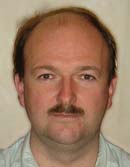Contents: 2024 | 2023 | 2022 | 2021 | 2020 | 2019 | 2018 | 2017 | 2016 | 2015 | 2014 | 2013 | 2012 | 2011 | 2010 | 2009 | 2008 | 2007 | 2006 | 2005 | 2004 | 2003 | 2002 | 2001
2008, 2
Influence of air on flexure waves diffraction in thin elastic plate
language: Russian
received 09.12.2007, published 22.01.2008
Download article (PDF, 430 kb, ZIP), use browser command "Save Target As..."
To read this document you need Adobe Acrobat © Reader software, which is simple to use and available at no cost. Use version 4.0 or higher. You can download software from Adobe site (http://www.adobe.com/).
ABSTRACT
When solving problems of flexure waves diffraction by obstacles in thin elastic plates, the influence of air is often neglected. In this paper the correctness of this approach is examined. Using the examples of obstacles of three types (point mass, short cut and small hole) it is observed that the error of the approximate approach in which the back influence of air on the plate is neglected, can be sufficiently large. In the case of obstacles which do not have holes, the errors can reach approximately 4% and are maximal at low frequencies. If the obstacle contains free edges, the errors of approximate approach increase and one can not neglect these errors not only at low frequencies, but also at frequencies close and above coincidence frequency. In the case when the obstacle contains hole of nonzero square the errors appear more essential.
Key words: vibrations of thin elastic plate, flexure waves, diffraction, generalized point models, numerical comparison, far field.
13 pages, 8 figures
Сitation: I. V. Andronov. Influence of air on flexure waves diffraction in thin elastic plate. Electronic Journal “Technical Acoustics”, http://www.ejta.org, 2008, 2.
REFERENCES
1. I. Andronov. Generalized point models in structural mechanics, World Scientific, 2002.
2. И. И. Клюкин (1971) Борьба с шумом и звуковой вибрацией на судах. Л., «Судостроение».
3. Д. П. Коузов, В. Д. Лукьянов (1975) Влияние точечных неоднородностей на колебания тонкой пластины // Механика твердого тела, № 6, с. 117-123.
4. Д. П. Коузов, В. Д. Лукьянов (1976) О звукопрозрачности тонкой упругой пластины, подкрепленной в дискретном наборе точек // Акуст. журн., т. 22, № 1, с. 43-51.
5. И. В. Андронов (1990) Рассеяние изгибной волны на конечной прямолинейной трещине в упругой пластине, ПММ, т. 54, вып. 2, с. 312-321.
6. И. В. Андронов (1993) Распространение звука в жидкости под упругой пластиной с трещиной, ПММ, т. 57, вып. 2, с. 141-146.
7. Б. С. Павлов (1987) Теория расширений и явно решаемые модели // Успехи матем. наук, т. 42, № 6, с. 99-131.
8. И. В. Андронов (1990) Моделирование процесса рассеяния на трещине в упругой пластине при помощи потенциалов нулевого радиуса // Записки научн. семин. ЛОМИ, т. 186, с. 14-19.
9. Б. С. Павлов, М. Д. Фаддеев (1983) О рассеянии на полом резонаторе с малым отверстием // Записки научн. семин. ЛОМИ, т. 126, с. 156-169.
10. Ю. К. Коненков (1964) Дифракция изгибной волны на круговом препятствии в пластине // Акуст. журн., т. 10(3), с. 186-190.
 |
Ivan Andronov graduated Leningrad State University (Russia), faculty of physics in 1987. He has got PhD degree in mathematical physics (thesis title is “Low frequency asymptotics in boundary-value contact problems of mathematical physics and operators extension theory”) in 1991. Presently he is associate professor at faculty of physics of St. Petersburg State University (Russia). e-mail: iva---(at)list.ru |
